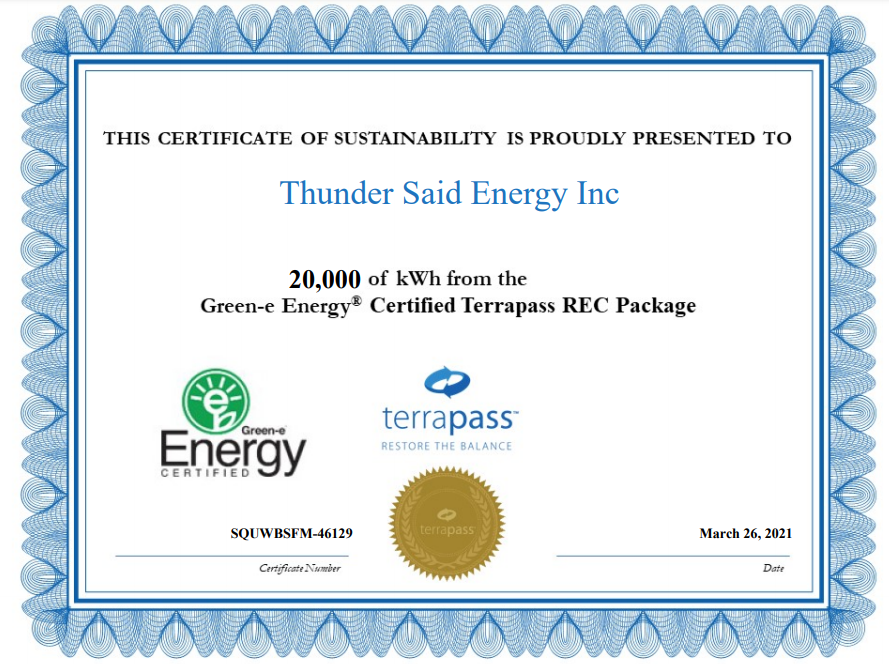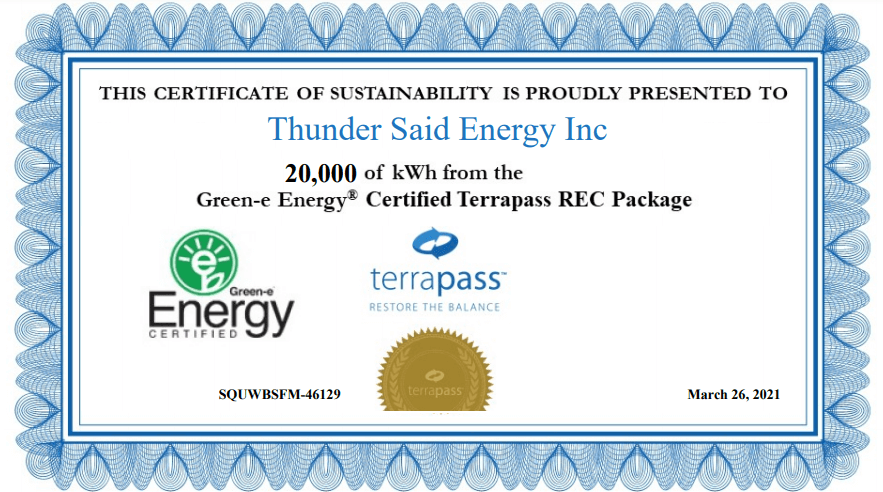Renewable Energy Certificates are legal contracts where all parties agree to pretend that gas and coal electrons are wind and solar electrons and vice versa. At best, these RECs incentivize incremental renewables projects to drive the energy transition. At worst, they may crowd out genuine decarbonization. At any rate, this note discusses some strange implications for energy analysts, as RECs have been commercialized over the past 20-years. Our view is that nature-based carbon credits may be superior to RECs.
Introduction: renewable energy credits in corporate decarbonization?
Increasing numbers of companies are embracing nature-based carbon offsets, as a part of their decarbonization strategies. We believe this will emerge as one of the largest and lowest cost opportunities to help the world reach ‘Net Zero’ CO2. Our data-file below, for example, quantifies the approaches of thirty leading companies.
But another strategy seen in companies’ decarbonization strategies has been to purchase “100% renewable energy”, especially for tech companies, where electricity dominates their CO2 emissions. At first glance, this is a strange claim to be making. Wind and solar only comprise c10% of the grid globally, c20% in Europe, and there are vast intermittency challenges in scaling wind and solar past 40-50% of any functioning system (see below).
Claims for 100% renewable electricity revolve around renewable energy certificates. These financial instruments also go by alternate names, such as ‘renewable energy credits’, ‘green tags’, ‘green energy certificates’, ‘tradable renewable certificates’, et al. But for the remainder of this article, we will abbreviate them as RECs.
Renewable Energy Credits (RECs) are the right to claim the environmental attributes of renewable electricity. They are traded in 1 MWH units. And they are sold by wind, solar, hydro and other green electricity producers.
An example for 100% renewable electricity. Let us assume a small island grid generates 100MWH of electricity in a given year. 10MWH is generated by solar, and 90MWH is generated by diesel. Company X consumes 10MWH of energy from the grid, which statistically comprises 1MWH of solar and 9MWH of diesel. However, Company X then purchases 10MWH of renewable energy credits from the solar plant. In other words, Company X has purchased the legal rights to attribute all 10MWH of solar energy to its own operations, and thus claim that 100% of its electricity purchases are renewable.
Who benefits? The positive interpretation is that purchasing RECs supports renewables and will accelerate their deployment. Indeed, a $1-5/MWH (0.1-0.5c/kWh) premium for a typical wind or solar asset likely increases the base case IRR on a typical project by 0.1-1.5 pp (models below). At best, this may incentivize new renewable projects that otherwise would have been stranded.
Who suffers? The negative interpretation is that the CO2 intensity rises for everyone who does not purchase RECs. Let us assume I am a resident on the island discussed above. All 10MWH of renewable generation on the island has legally been claimed by Company X. The electricity I am buying, therefore is sourced from the remaining 90MWH generated by diesel. Bizarrely, even if I am drawing my electricity directly from the solar panels, I cannot claim to be using clean electricity. The attribution rights for that clean electricity have already been claimed by Company X and must not be double-counted.
Open to interpretation? The interpretation above is actually not ours, but that of the US Federal Trade Commission, i.e. the US’s foremost consumer protection agency. Its guidance document gives the following example: “A toy manufacturer places solar panels on the roof of its plant to generate power, and advertises that its plant is ‘‘100% solar-powered.’’ The manufacturer, however, sells renewable energy certificates based on the renewable attributes of all the power it generates. Even if the manufacturer uses the electricity generated by the solar panels, it has, by selling renewable energy certificates, transferred the right to characterize that electricity as renewable. The manufacturer’s claim is therefore deceptive. It also would be deceptive for this manufacturer to advertise that it ‘‘hosts’’ a renewable power facility because reasonable consumers likely interpret this claim to mean that the manufacturer uses renewable energy”.
Market metrics: how widespread and reliable are RECs?
How widespread? NREL tracks the REC market. It estimates that in 2019, 197,000 customers purchased 69TWH of unbundled RECs. For comparison, US wind and solar generation were around 400TWH in 2019. About 360 corporate offtakers also purchased about 42TWH directly through PPAs, which suggests corporations are buying 1.5x more renewable energy ‘indirectly’ through RECs than directly through using renewables, which would be a somewhat surprising finding.
Average REC pricing was around $1/MWH ($0.1c/kWh) in 2019-20, although some RECs were commercialized for as much as 15-40c/kWh. In our view, paying a mere 0.1c/kWh for a REC makes it challenging to claim that your purchase has been the decisive factor that caused a wind or solar project to go ahead, when the wind or solar power is also selling its power to the grid at 6-8c/kWh. This is different from a nature-based carbon credit, where the $3-50/ton CO2 price comprises the vast majority, or potentially all, of a reforestation project’s revenues (models below).
How reliable? Each REC is given a unique identification code, to ensure it is not double-counted. Ideally, RECs are also certified by independent consumer protection bodies, such as Green-E. And when purchased, you will receive a legal assurance that the RECs have been retired, so they cannot be re-sold multiple times over.
Finally, some of the largest purchasers of RECs (Google, Amazon, the US Department of Defence) have written policies favoring direct renewables purchases, while ensuring that purchased RECs are “additional” (i.e., they support new, incremental projects) and ideally also geographically proximal. Nevertheless, there can be some strange implications to RECs, discussed below.
Strange Implications: accounting for RECs?
Rooftop solar: what implications? Many rooftop solar installations in the US are leased. By law, the solar installer often retains the right to sell RECs originating from that solar panel. To re-iterate, if those RECs are sold to a third-party, then that third party is the legal “user” of the green energy attributes from the solar panel. So even if my electric vehicle is charging directly from the solar panel – even if I am holding the direct cable linking the two; even if I can see that the vehicle’s charging rate falls when a cloud passes overhead — I may no longer be able to claim that my electric vehicle is being charged by solar energy, as I am no longer the owner of that claim.
Electric vehicles: what implications? RECs matter for the greenness of electric vehicles and other electrically powered devices. We estimate that a typical electric vehicle has 50% lower CO2 intensity per mile than an ICE car, if it is charged from the US grid today (model below). But in fact, the EV numbers will be slightly worse than we are showing below. Our estimates assume an overall CO2 intensity of 0.42kg/kWh for the US grid, which blends the share of coal, gas, nuclear, renewables, et al. However, due to the sale of RECs, debatably, I can no longer claim some of those renewables are part of my grid mix, as they have already been claimed by the purchasers of those RECs. Because of RECs, you cannot simply assume that the electricity pulled from a grid with 20% renewables itself comprises 20% renewables.
Green hydrogen: what implications? The blending of RECs with green hydrogen could become a minefield of complexity. For example, imagine a hydrogen electrolyser that is powered by a wind turbine. If you sell RECs against the wind turbine, does this transform the green hydrogen into grey hydrogen?! Conversely, if you power a hydrogen electrolyser around the clock using a coal plant, and then buy enough RECs, could you claim that the hydrogen was green?! My personal intuition is that green hydrogen projects will likely need to be very careful around any REC involvement and should probably avoid them altogether.
Coal power: what implications? Another strange implication is that RECs could be seen to slow the shift away from CO2 intensive coal to lower carbon electricity sources, in the way that is required on our ‘roadmap to net zero‘. For example, if I buy my power from a coal plant, then legally, I can ‘decarbonize’ my power purchases for a cost of $1-6/ton of CO2-equivalents, by buying RECs ($1-5/MWH cost divided by 0.8-1.0 T CO2/MWH CO2 intensity in coal power). This is an order of magnitude cheaper than, say, installing CCS at the coal plant, which is likely to cost well over $75/ton; or improve its thermal efficiency with heat-exchangers ($50/ton); or switch to a 50-60% lower-carbon gas plant ($0-80/ton). Thus one might fear that paying to “have my coal plant legally treated as a solar plant” is actually crowding out genuine decarbonization.
Nature based carbon offsets versus renewable energy credits?
My own personal intuition is that RECs may have a role for some consumers that want to incentivize renewable energy projects, but nature-based carbon offsets feel “more valid” as a means to drive global decarbonization.
For example, the certificate below gives me the legal right to claim I purchased 20MWH of renewable electricity in 2020, which covers 100% of the estimated electricity from Thunder Said Energy’s 2 full time employees, working in heated and air conditioned (home) offices, and sending 1M emails per year (our distribution list is getting quite large). So legally, for the mere cost of $100, I can now claim Thunder Said Energy was fully powered by renewable energy in 2020.

But at some level, I know full well I was sitting in New Haven, Connecticut in 2020, buying electricity that was mostly sourced from natural gas (I used to walk past the generating plant on the way to the swimming pool). And I also doubt that my purchase has incentivized any new renewable projects to go ahead, at a price of 0.5c/kWh (which in turn has been sub-divided between commercial entities, REC traders and renewable projects themselves).
This simply “feels different” from my nature-based carbon offset purchases. Last year I engaged two tree planting charities to plant a set number of incremental trees to offset all of TSE’s CO2 (note below). Nature based solutions can also be used to offset broader CO2 emissions, beyond just electricity purchases.
Nature based solutions do have challenges. It is important to ensure they are additional, reliable, long-lived and biodiverse. But the largest pushback we have tabulated (below) is that they are a distraction from true decarbonization. Some of their most vehement critics of NBSs call them “modern day indulgences”. Puzzlingly, some of the critics making this argument have had no issue advocating for RECs over the past twenty years.
Our own view, to be clear, is that NBSs will comprise c25% of the heavy-lifting on the road to net zero. They must also be combined with efforts to develop 500GW pa of renewables, improve global energy efficiency by c25% and develop 10GTpa of CCUS opportunities. But NBSs may slowly overtake RECs as the most favored carbon offset option globally.

